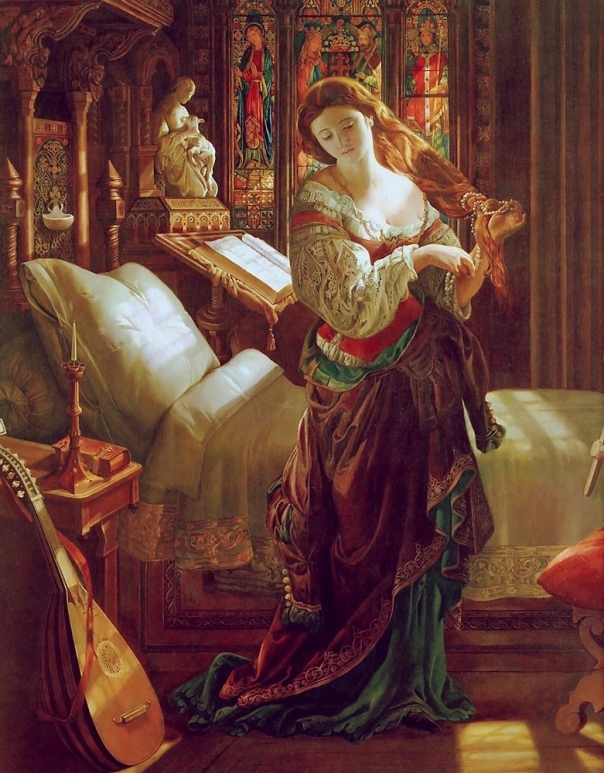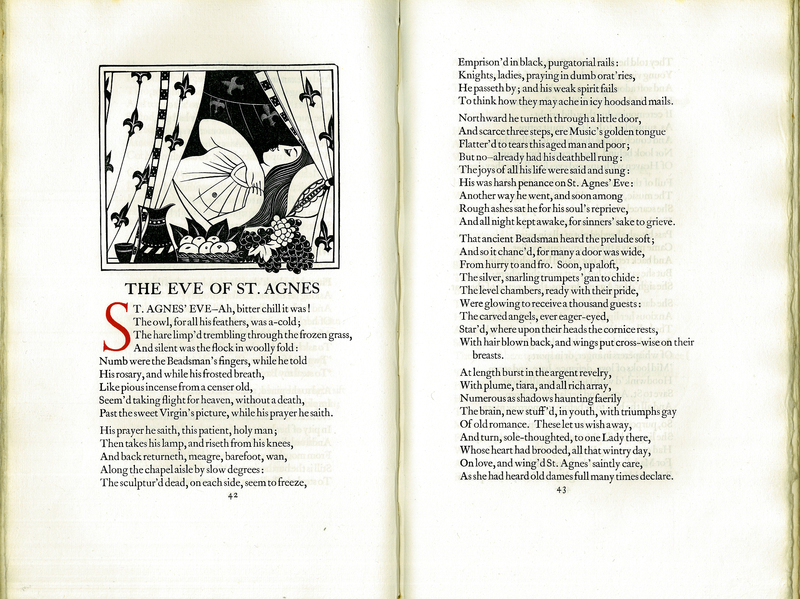The Eve of St. Agnes
Excerpt:
She hurried at his words, beset with fears,
For there were sleeping dragons all around,
At glaring watch, perhaps, with ready spears—
Down the wide stairs a darkling way they found.—
In all the house was heard no human sound.
A chain-droop'd lamp was flickering by each door;
The arras, rich with horseman, hawk, and hound,
Flutter'd in the besieging wind's uproar;
And the long carpets rose along the gusty floor.
Agnes of Rome was a member of the Roman nobility who was regarded as extremely attractive. Because she was a Christian, she was sentenced to be taken nude through the streets to a brothel. She was then executed by beheading. In the Roman Catholic Church, Agnes is considered a saint. She is a virgin and chastity patron saint. Saint Agnes' feast day is January 21. The title of this poem comes from the folk belief that on the eve of St. Agnes' feast day if a girl completed specific customs such as going to bed without supper and without glancing behind her, her future spouse would arrive in her dream.
The poem portrays the narrative of lovers Porphyro and Madeline, who come from opposing households. Madeline, who believes in the tale of St. Agnes' Eve, conducts the necessary rituals, and the story progresses from there. The Eve of St. Agnes is made up of 42 Spenserian iambic nine-line stanzas. ‘The Eve of St. Agnes’ is one of John Keats’ more long and detailed poems. This poetry is filled with imagery that exemplifies natural sensuality, such as "brushing the cobwebs with his towering plume."
Keats penned this poem shortly after falling in love with Fanny Brawne in 1819. This poem is regarded by critics all over the world as Keats' celebration of his first romantic encounter. It is really descriptive poetry that piques the reader's interest. The poem was significant in 19th-century English literature and is regarded as one of Keats' finest works.
Type: Narrative Poem
Published: 1820












